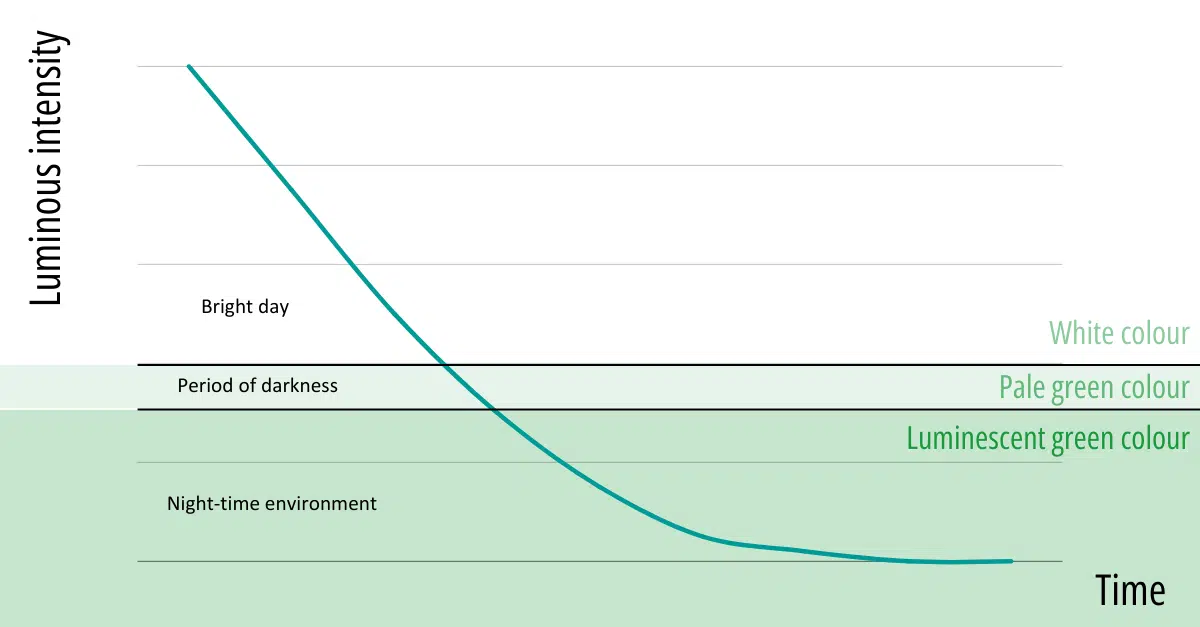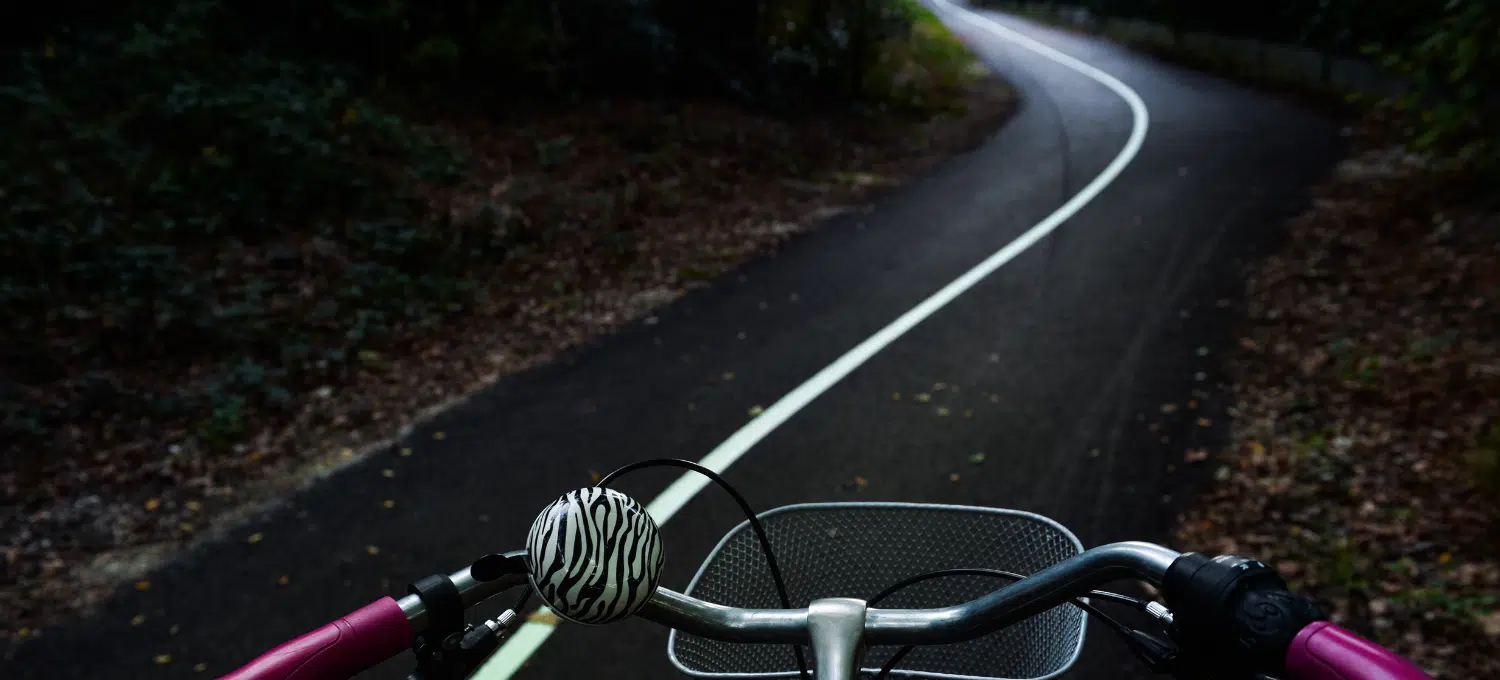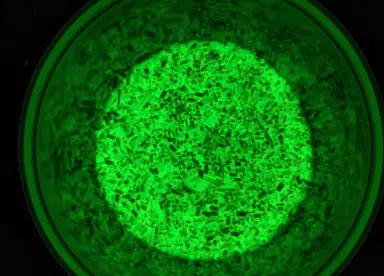Glow in the dark paints are increasingly used in road safety and urban development, particularly for night-time mobility. Thanks to their unique ability to glow in the dark, they offer a solution for illuminated signage in the dark, without the need for electricity, for both indoor and outdoor projects.
LuminoKrom® offers a wide range of glow in the dark products to suit different marking projects. Depending on your needs, you can select one of the three options of colors for paint in our catalogue: almond green, yellow and white. These are the natural true colors of daytime paint.
But what color is luminescent paint at night?
Understanding the differences in paint colors in different luminous conditions is essential to getting the most out of our marking product. This article aims to guide users through the different color options in stock and available in our catalogue, and to explain how our glow in the dark paint reacts to daylight, adverse weather conditions and total darkness.
Through our detailed descriptions and explanatory diagram at the end of the article, you'll discover what phosphorescent paint looks like when applied. Whether you're working on an artistic project, a safety sign or an urban development project, this guide will help you to understand all the ins and outs of photoluminescent paint and to make the ideal choice for your specific needs, in order to achieve a quality finish.
What is glow-in-the-dark paint?
Before talking about the color of our luminescent marking product, it's important to remember what phosphorescent paint is in general and to understand the differences with fluorescent product.
A phosphorescent paint, commonly called glow in the dark paint, is a paint specially designed to exploit the phenomenon of photoluminescence, also known as phosphorescence. It has the ability to glow in the dark after being exposed to a luminous source. This phenomenon requires the presence of special pigments in the material. These phosphorescent pigments absorb daylight, whether natural or artificial, and gradually release it when they are plunged into darkness or partially dark.
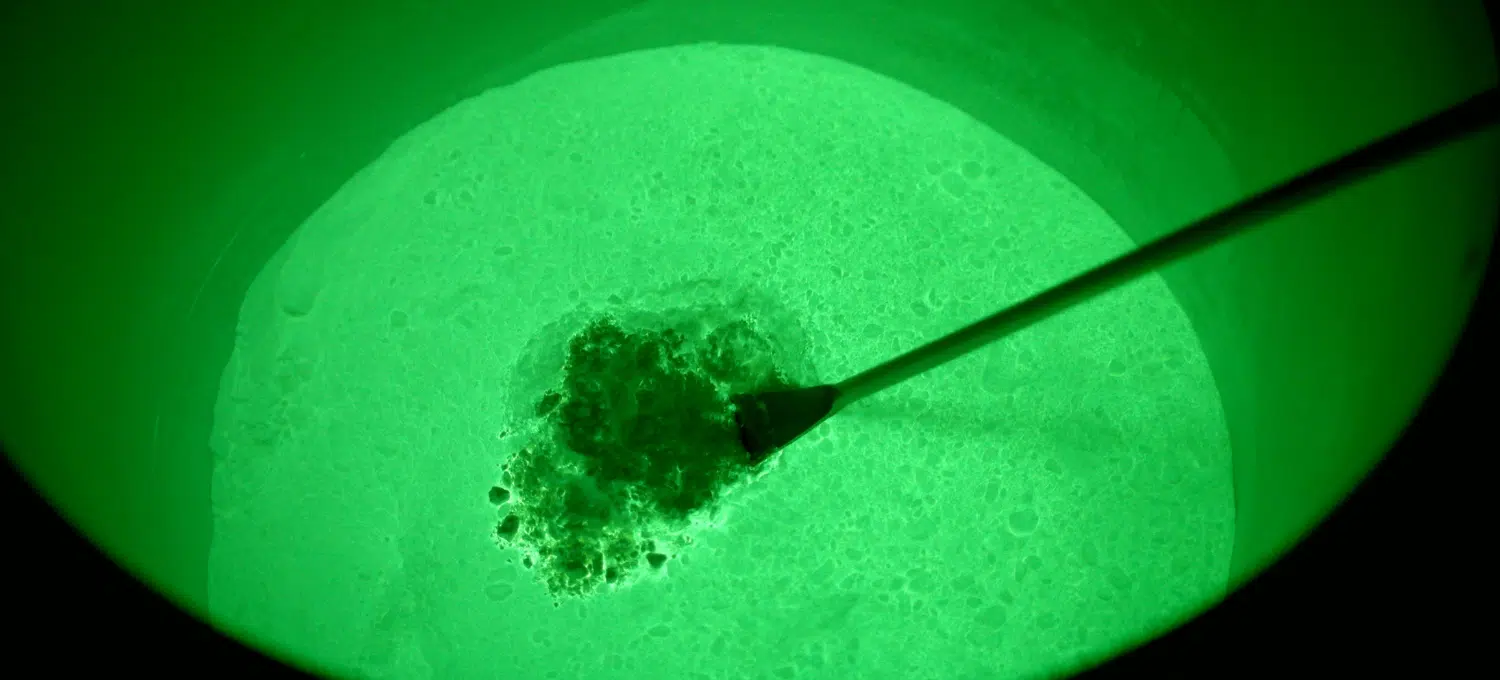
Unlike fluorescent paint, which reacts instantly to UV light, phosphorescent paint emits a continuous, diminishing glow once it is in the dark. The photoluminescent pigment requires a luminous source, to store the energy available during the day, to keep it in stock, to re-emit it as soon as night falls or when the product is immersed in the dark.
Common uses for our products include safety signage, cycle paths and footpaths, urban design and even creative and artistic projects. Any environment which requires a quick and efficient illuminated lighting solution.
Glow in the dark paint has many benefits: it improves visibility and safety at night, adds a luminous presence in dark environments and is increasingly encouraging soft mobility policy as a sustainable means of transport.
The different colors of glow-in-the-dark paints
Our photoluminescent technology is available in three different paint colour options: yellow, almond green and white. Each has its own characteristics, performance and areas of application (full details are given in the technical data sheet for each photoluminescent product).
- Yellow glow in the dark paint, for example, is particularly popular for floor or wall signage in industrial environments, offering high visibility in the dark while respecting the colors of the industry. Yellow tone is often associated with a work zone or temporary obstacle.
- Green color, the most commonly used tone, is often used in outdoor environments and for road safety markings, thanks to its ability to glow intensely in the dark. Local authorities prefer to use green to paint soft mobility and pedestrian walkways.
- As for white glow paint, it is perfect for more discreet, neutral applications, such as road markings (off-road - awaiting approval for deployment on roads) or wall applications, where it can blend easily into the background while offering a soft, diffused glow at night. Neutral white is perfect in public environment.
Would you like to know more about the different products in our catalogue and when to use them? Follow our other guide to choosing the right professional paint.
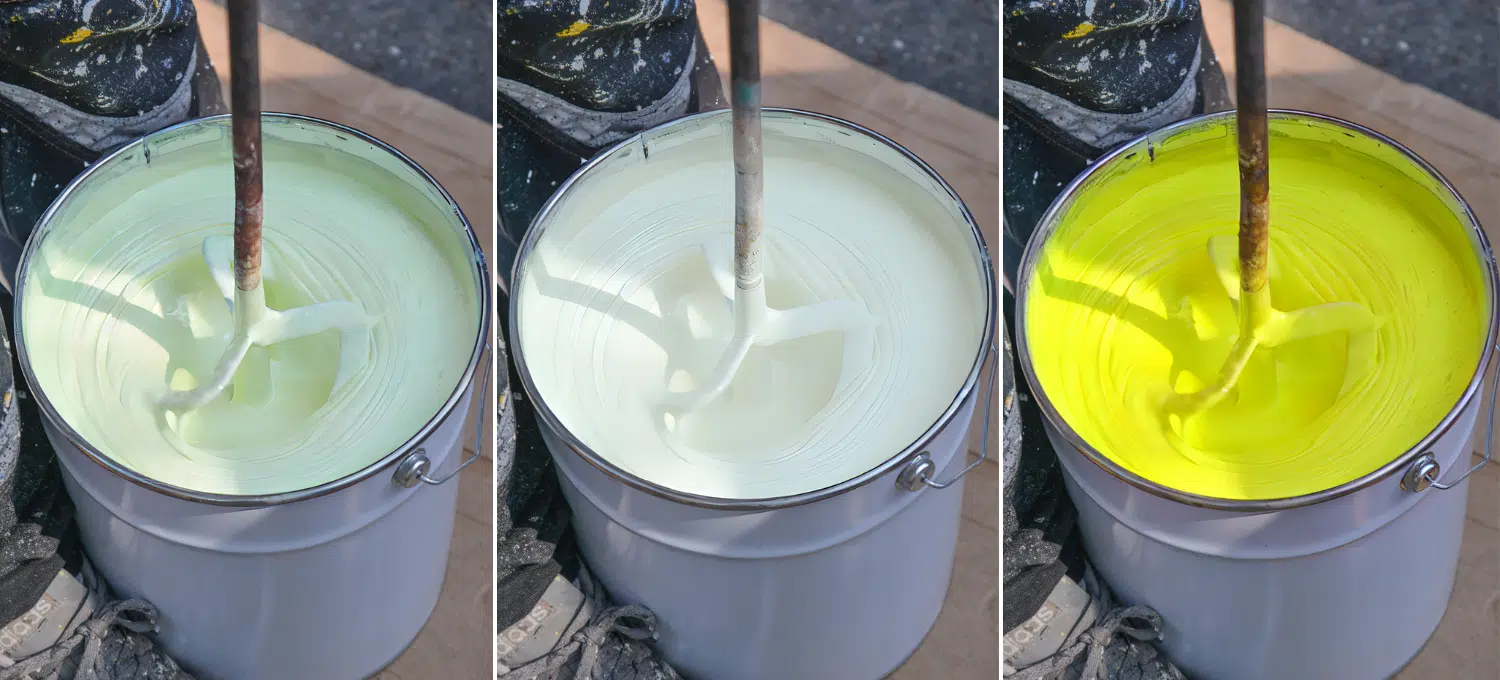
The colors shown above refer to the true tone of the raw paint, observed in natural daylight or under lighting conditions. During the day, with sufficient luminous intensity, the colors of the markings are those shown above : pale green, yellow or neutral white.
In daylight, glow in the dark paints reveal their true colours as described on the can and product data sheet, i.e. yellow, almond green or white. These paint shade options remain pale and neutral, so they blend in perfectly with any urban or public environment, and adapt coherently to any project.
However, when there is little or no luminescence, the photoluminescent markings look completely different.
Paint behavior according to light variations
Poor weather conditions
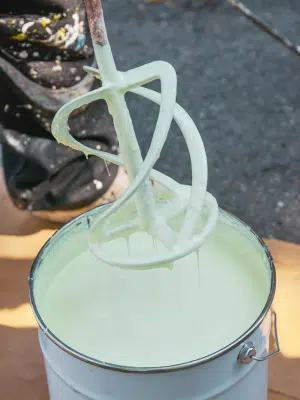 |
Poor weather conditions, such as clouds and fog, can have a significant impact on the appearance of glow paints. Under overcast skies or in fog, the external luminous source intensity is reduced, which can cause a change in the tint and appearance of the paint. In other words, the surrounding external intensity is equal to the emitted intensity of the photoluminescent paint, so the paint becomes slightly greenish.
For example, paint that is normally yellow or white in daylight can appear greenish in such weather conditions. This is because the glow in the dark paint emits more luminescence than the ambient environment. |
In regions where weather conditions are often poor and there is very little sunshine, it will be common to see variations in paint tones(for white and yellow options) on certain days when there is little luminescence. Even if the marking is not plunged into total darkness, a flagrant lack of light will begin to reveal the glow effect of the pigments in the paint.
Take, for example, our white paint deployed in a partially shaded environment or in a forest. It won't necessarily show its natural white color in broad daylight, because the luminous exposure will be low. We can view a marking with a pale green tone.
In this case, opting for the glow almond green product may be a wise option, as the marking will tend to retain a similar, distinct color even under overcast skies, ensuring a consistent appearance whatever the conditions.
Dark or night-time environment
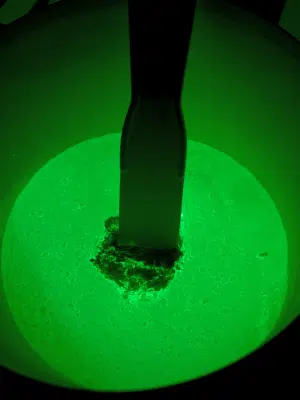 |
In a dark environment or at night, glow in the dark paint reveals all its magic by emitting an intense, captivating "fluorescent" glow in the dark. This phosphorescent behaviour results from the luminous energy stored by the photoluminescent pigment, absorbed during the day, which is then slowly released in the form of visible light.
Most luminescent paints, whatever their initial color, tend to emit a green "fluorescent" light in the dark. This glow-in-the-dark green effect will undeniably be the same for all types of paint, in any shade and in any area of application.
|
This transition to a green tone is due to the properties of the phosphorescent pigments, which are optimised for maximum luminous emission in this color spectrum. The external light intensity is lower than the intensity emitted by the paint, so the paint becomes phosphorescent and green in color.
The benefits of this phosphorescent transition are numerous. Firstly, it considerably improves safety by making objects and markings visible in the dark, which is essential for visibility in exit routes, stairways and other accident-prone areas. What's more, the green color adds a unique "warning" dimension, much more noticeable than white markings. So, by choosing glow in the dark paint, you can combine usefulness and safety for users in a dark environment.
Evolution of a luminescent marking as a function of light intensity
To illustrate what we're saying and give you a better understanding of how the color of a glow in the dark paint changes according to its environment, take a look at the graph showing how the same markings change over time, from white during the day, to a greenish color in semi-dark conditions, to a perfectly fluorescent green at night.
The result is spectacular, almost magical!
